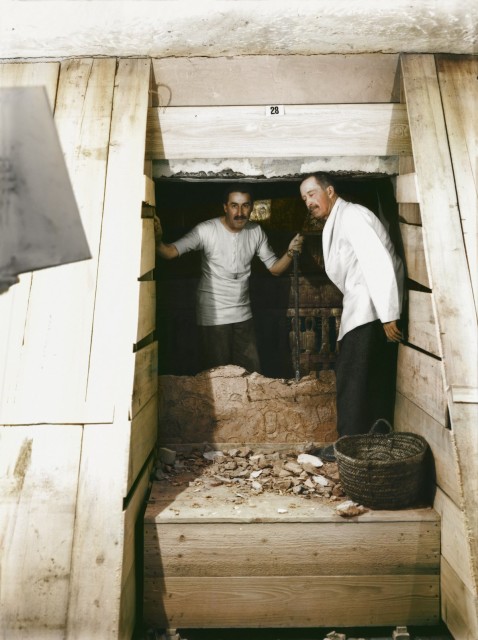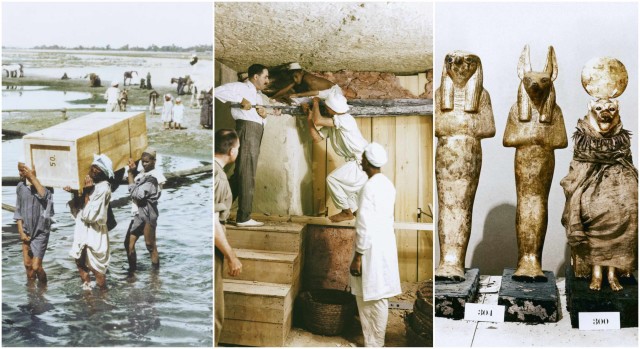
The tomb of the young pharaoh Tutankhamun in the Valley of the Kings, now renowned for the wealth of valuable antiquities it contained, was discovered in 1922 by Howard Carter, underneath the remains of workmen’s huts built during the Ramesside Period
The tomb was densely packed with items in great disarray, partly due to its small size, the two robberies, and the apparently hurried nature of its completion. Due to the state of the tomb, and to Carter’s meticulous recording technique, the tomb took eight years to empty, the contents all being transported to the Egyptian Museum in Cairo.
Harry Burton, a prominent photographer from the Metropolitan Museum documented the process at every stage and developed his photos in an improvised darkroom in a tomb nearby. The following collection of photos has been colorized by Dynamichrome for the exhibition The Discovery of King Tut that was displayed in New York.
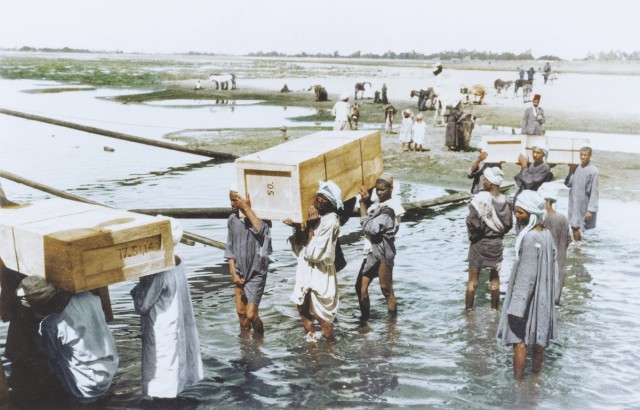
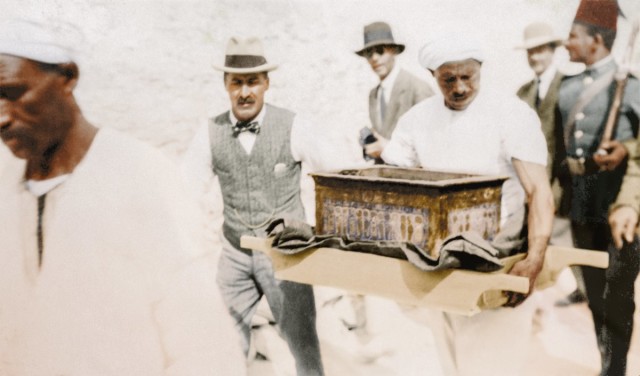
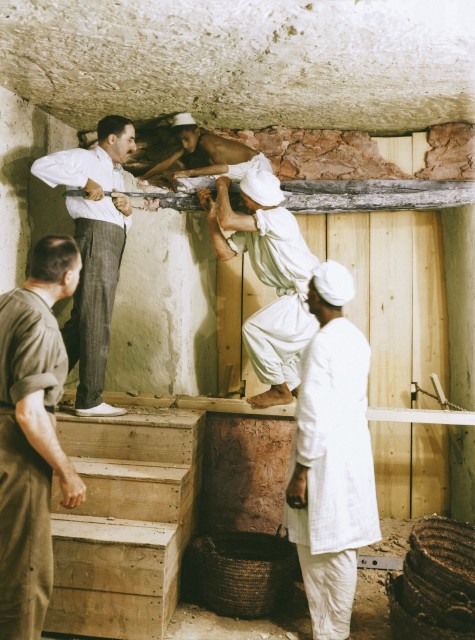
Tutankhamun was buried in a tomb that was unusually small considering his status. His death may have occurred unexpectedly, before the completion of a grander royal tomb, so that his mummy was buried in a tomb intended for someone else. This would preserve the observance of the customary 70 days between death and burial.
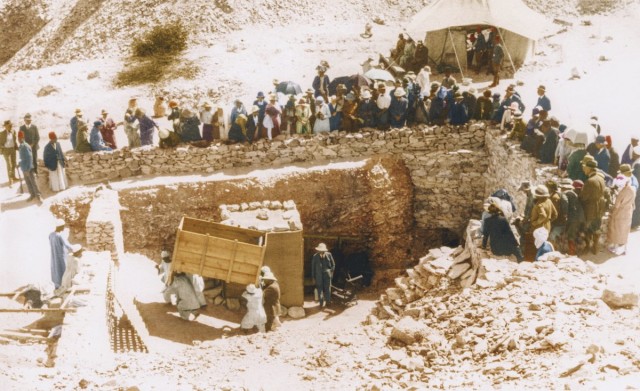
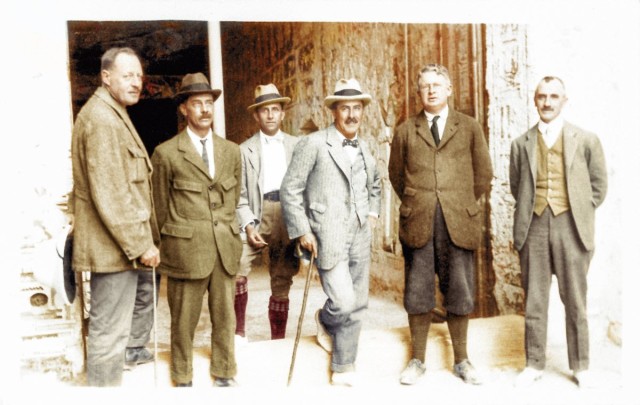
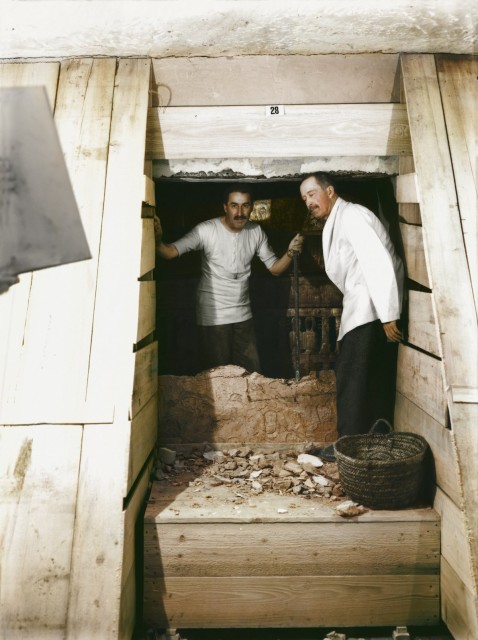
5,398 items were found in the tomb, including a solid gold coffin, face mask, thrones, archery bows, food, wine, sandals and fresh linen underwear. Howard Carter took 10 years to catalog the items. Relics from Tutankhamun’s tomb are among the most traveled artifacts in the world. They have been to many countries, but probably the best-known exhibition tour was The Treasures of Tutankhamun tour, which ran from 1972 to 1979. This exhibition was first shown in London at the British Museum from the 30th of March until the 30th September 1972. More than 1.6 million visitors saw the exhibition, some queuing for up to eight hours. It was the most popular exhibition in the Museum’s history.
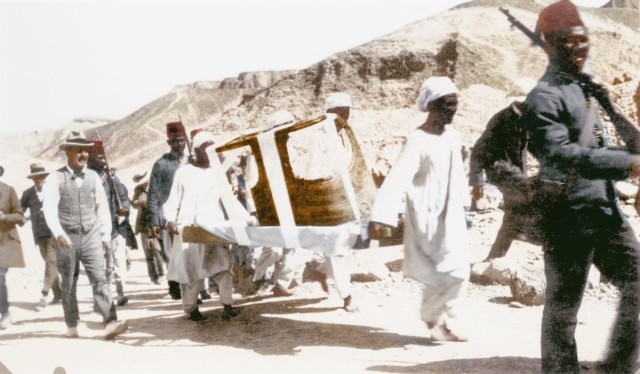
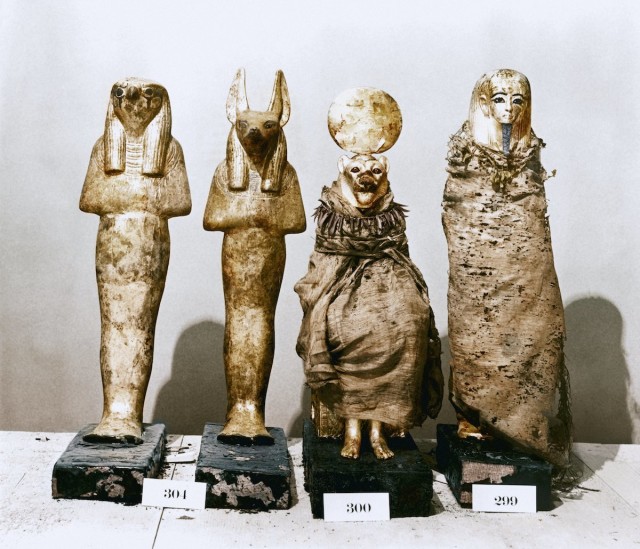
The tomb is open for visitors, at an additional charge above that of the price of general access to the Valley of the Kings. The number of visitors was limited to 400 per day in 2008. In 2010, the tomb was closed to the public while restoration work was undertaken by the
All images THE GRIFFITH INSTITUTE, OXFORD. Colorized by DYNAMICHROME for the exhibition “THE DISCOVERY OF KING TUT” In New York.
